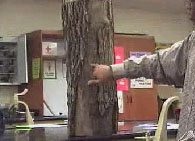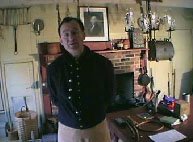This morning I gave a 5 minute overview of our distance learning programming to the curriculum directors from the 16 school districts in Berrien County. Then I stayed and listened to the rest of the meeting. It was a vivid reminder on the curriculum and assessment pressures on schools. Teachers have so many things to worry about these days! New 8th grade assessment, 300+ benchmarks for math teachers to cover, updates on professional development opportunities we offer to our districts, etc. etc.
There's so much to think about... so much pressing in... so many things to do.
Yesterday I started reading
Doug Johnson's blog, a presenter I enjoy hearing at the annual
MACUL conference. This question has simmered in my brain since.
What drives your technology initiatives? He asks:
How much is it the technology department’s job to promote technology use? How much is the technology department’s job to support the technology initiatives of the pedagogical experts?
You can apply this question to videoconferencing as well. I talked to another colleague yesterday who expressed concern that someone always has to coordinate and drive the use of videoconferencing. "When will the teachers be able to do it on their own," he wondered.
However, after hearing what our curriculum directors are dealing with, and in turn passing on to their teachers, I don't think it's reasonable to expect teachers to do this on their own. I'm doing verification tests for
Read Across America today too. Think of the work it takes to make a connection work.
- You have to be trained on the equipment and able to troubleshoot.
- You have to be able to navigate all the different ways to schedule and test with content providers. I did a test call yesterday that would have been quite confusing even for my building level distance learning coordinators, let alone a teacher on their own.
- You have to understand the technology well enough to imagine the curriculum possibilities.
- You also need a firm grounding in curriculum and pedagogy so you can imagine the curriculum possibilities!
- If you want to use it a lot and creatively, you have to be able to keep up on all the creative ways other people are using VC. Reading and finding articles, paying attention to the listservs, etc. This activity informs your ability to imagine the curriculum possibilities.
I think that takes a coordinator at some level! Even if media specialists are responsible for all this, they seriously need support as well!
When you know the possibilities, you can dream up some really great VCs that tightly match the curriculum. Like the
Invasive Species project I'm running next week for a biology class at Lakeshore High School [Feel free to copy this idea!]. Or the wild ideas I'm dreamed up with our fine arts consultant this morning for drama, theater, and dance classes.
It's not just that the technology is still not as simple as a phone call. It's also that teachers need assistance imagining how videoconferencing could enhance their curriculum and knowing who they could connect to!
So for now at least, distance learning coordinators at all levels are essential people!















